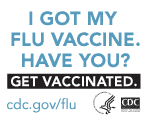Information for Health Care Professionals
For information on rabies vaccination.

Spotlight: State rabies consultation contacts
Rabies is a medical urgency not an emergency. Please consult with local or state health officials for recommendations on potential rabies exposure scenarios.
Should Rabies Be On the Differential Diagnosis List?

Patient history, duration and progression of illness, and laboratory tests for other common etiologies of encephalitis will help determine if rabies should be on the differential diagnosis list for a patient. Patient history is important to identify a possible exposure to rabies and other encephalitides; however, rabies should never be ruled out based solely on the absence of definite exposure history.
Rabies should be considered in patients with signs or symptoms of encephalitis or myelitis, including autonomic instability, dysphagia, hydrophobia, paresis, and paresthesia, particularly if a nonspecific prodrome preceded the onset of these signs by three to four days. Progressive worsening of neurologic signs is characteristic of rabies and should be considered as a positive indicator for rabies. Laboratory tests to rule out common encephalitides (herpes, enteroviruses, arboviruses) should be performed. Negative results of these tests would increase the likelihood of rabies as the diagnosis. If a patient presents with symptoms similar to the ones described above, but the neurologic status does not change and the illness continues for longer than three weeks, rabies is unlikely as the diagnosis.
- Nonspecific prodrome prior to onset of neurologic signs
- Neurologic signs consistent with encephalitis or myelitis
- dysphagia
- hydrophobia
- paresis
- Progression of neurologic signs
- Negative test results for other etiologies of encephalitis
- Improvement or no change in neurologic status
- Illness with ≥ 2 to 3 week duration
Collection of Samples
The state health department should always be contacted before collecting and submitting samples to the Rabies Laboratory at the Centers for Disease Control and Prevention (CDC). After consulting with the state health department, any remaining questions can be directed to the Rabies Section at the CDC by calling (404)-639-1050. The following instructions will guide you in collecting samples for rabies testing.
- Patient History
Please complete the associated form detailing the clinical history of the patient and provide the name and phone number of the physician who should be contacted with the test results. This form must accompany any samples sent to the Rabies Laboratory at the CDC. ( Possible Human Rabies --Patient Information Form [PDF – 347 KB])
Possible Human Rabies --Patient Information Form [PDF – 347 KB]) - Antemortem Samples
All samples should be considered as potentially infectious. Test tubes and other sample containers must be securely sealed (tape around the cap will insure that the containers do not open during transit). If immediate shipment is not possible, samples should be stored frozen at -20oC or below. Samples should be shipped frozen on dry ice by an overnight courier in water-tight primary containers and leak-proof secondary containers that meet the guidelines of the International Air Transport Association. The rabies laboratory at CDC should be telephoned (404-639-1050) at the time of shipment and given information on the mode of shipment, expected arrival time, and courier tracking number.All four samples listed below are required to provide an antemortem rule out of rabies. A rule out can not be provided if all samples are not collected.
- Saliva
Using a sterile eyedropper pipette, collect saliva and place in a small sterile container which can be sealed securely. No preservatives or additional material should be added. Laboratory tests to be performed include detection of rabies RNA (by reverse transcription and polymerase chain reaction, RT/PCR, of extracted nucleic acids) and isolation of infectious virus in cell culture. Tracheal aspirates and sputum are not suitable for rabies tests. - Neck Biopsy
A section of skin 5 to 6 mm in diameter should be taken from the posterior region of the neck at the hairline. The biopsy specimen should contain a minimum of 10 hair follicles and be of sufficient depth to include the cutaneous nerves at the base of the follicle. Place the specimen on a piece of sterile gauze moistened with sterile water and place in a sealed container. Do not add preservatives or additional fluids. Laboratory tests to be performed include RT/PCR and immunofluorescent staining for viral antigen in frozen sections of the biopsy. - Serum and cerebral spinal fluid (CSF)
At least 0.5 ml each of serum and CSF should be collected; no preservatives should be added. Do not send whole blood. If no vaccine or rabies immune serum has been given, the presence of antibody to rabies virus in the serum is diagnostic and tests of CSF are unnecessary. Antibody to rabies virus in the CSF, regardless of the immunization history, suggests a rabies virus infection. Laboratory tests for antibody include indirect immunofluorescence and virus neutralization.
Brain biopsy
The rarity of rabies and the lack of an effective treatment make the collection of a brain biopsy for antemortem testing unwarranted; however, biopsy samples negative for herpes encephalitis should be tested for evidence of rabies infection. The biopsy is placed in a sterile sealed container; do not add preservatives or additional fluids. Laboratory tests to be performed include RT/PCR and immunofluorescent staining for viral antigen in touch impressions. - Saliva
- Postmortem Samples
In certain cases, human samples may need to be tested for rabies postmortem. Consult with the state health department before shipping any samples to the Rabies Laboratory at the CDC. Fresh tissue samples from the central nervous system (brain) should be submitted.Postmortem diagnosis of rabies is made by immunofluorescent staining of viral antigen in touch impressions of brain tissue. Portions of the medulla (brain stem), the cerebellum, and the hippocampus should be frozen and shipped on dry ice to a public health laboratory or the CDC laboratory. Preservation of tissues by fixation in formalin is not recommended if rabies diagnosis is desired.
Management of Human Rabies
Persons Exhibiting Clinical Signs of Rabies
Clinicians faced with treating clinical rabies patients can either offer supportive therapy or an aggressive treatment plan. There is no single effective treatment for rabies once clinical signs are evident. The following resources provide current research and thoughts regarding treatment options. These are not intended to serve as recommendations for rabies treatment.
 Management of Rabies in Humans (PDF – 128 KB)
Management of Rabies in Humans (PDF – 128 KB)- Rabies Registry Website, Medical College of Wisconsin*
Milwaukee Rabies protocol can be reviewed here
* Links to non-Federal organizations found at this site are provided solely as a service to our users. These links do not constitute an endorsement of these organizations or their programs by CDC or the Federal Government, and none should be inferred. CDC is not responsible for the content of the individual organization Web pages found at these links.
![]() Please note: Some of these publications are available for download only as *.pdf files. These files require Adobe Acrobat Reader in order to be viewed. Please review the information on downloading and using Acrobat Reader software.
Please note: Some of these publications are available for download only as *.pdf files. These files require Adobe Acrobat Reader in order to be viewed. Please review the information on downloading and using Acrobat Reader software.
Content Source: National Center for Zoonotic, Vector-Borne, & Enteric Diseases (ZVED)

